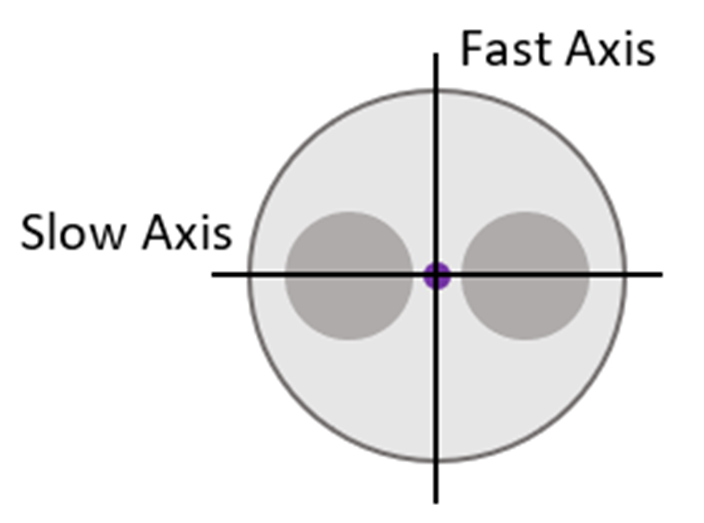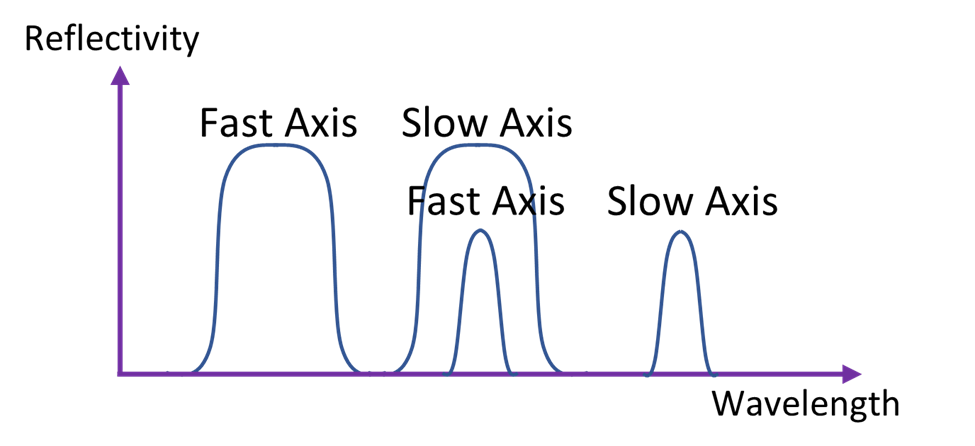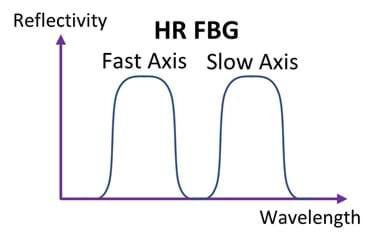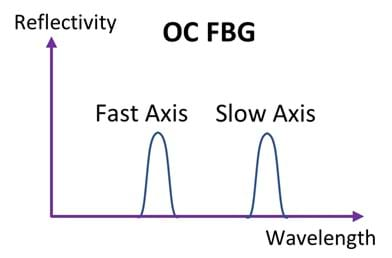Linearly Polarized Fiber Lasers with PM FBG Reflectors
On: Jun 19, 2023
In: High Power Lasers
Introduction
Linearly polarized fiber lasers are required in many applications such as sensing, nonlinear frequency conversion, and for coherent or polarization beam combining. To obtain linearly polarized fiber lasers, a polarizer can be used at the output or inside the fiber laser cavity to select a single polarization. But this technique presents several disadvantages such as increased cost, higher insertion losses, power limitations, and reliability issues. A much more effective technique to achieve a linearly polarized fiber laser is to use FBGs written in polarization-maintaining (PM) fiber and
the cross-axis splicing technique described in this application note.
Applications
- Frequency conversion
- Sensing
- Polarization combining
- Coherent combining
FBG Reflectors in PM Fibers
The center wavelength of a Fiber Bragg Grating (FBG) reflector depends on the refractive index of the optical fiber:

PM fibers have rods to apply stress on the core and create a higher refractive index in one axis. This axis is called the slow axis as light travels slower when refractive index is higher as illustrated in Figure 1.

Figure 1. Polarization-Maintaining Panda-type Optical Fiber
FBG written in PM fiber will therefore have two reflection peaks whose wavelengths correspond to the slow and fast axes, respectively. The difference in wavelengths between the fast- and slow-axis peaks depends on the fiber birefringence as illustrated in Figure 2 below.
Figure 2. HR and OC FBG reflectors showing both fast and.png
Linearly Polarized Fiber Laser Design with PM FBG reflectors
To obtain single polarization operation, the FBG HR and OC reflectors must be properly designed to ensure that the center wavelength of the HR-FBG slow axis is matched with the center wavelength of the OC-FBG fast axis. To that purpose, one can use TeraXion series of HPR reflectors that offer a matched pair of HR and OC reflectors specifically designed for this application as illustrated in Figure 3.

Figure 3. Matched pair of HR and OC FBG reflectors
The figure 4 below illustrates the cross-axis splicing technique where the HR FBG is spliced at the input of the active fiber with the axes of both fibers aligned. At the output of the gain fiber, the OC FBG is spliced with a 90 deg rotation (cross-axis splicing). This technique ensures that only one of the two polarized modes can lase in the cavity. Linearly polarized fiber lasers with high polarization-extinction ratio (PER) were demonstrated using this technique.

Figure 4. Linearly Polarized fiber laser design using FBG reflectors with cross-axis splicing technique
Conclusion
Linearly polarized fiber lasers are required for several applications. Fiber lasers with single polarization can be advantageously designed using PM FBG reflectors such as TeraXion HPR reflectors specifically designed for this application and a cross-axis splicing technique. This technique allows to design linearly polarized lasers with high polarization extinction ratio (PER).


